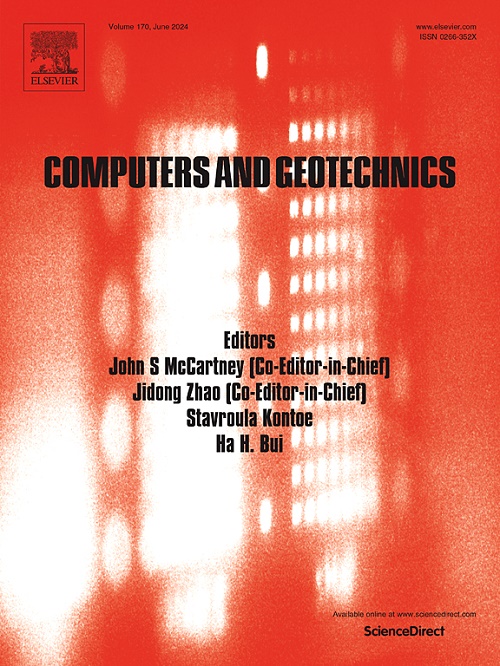DEM modelling of shaft load transfer behavior of rock-socketed piles
IF 5.3
1区 工程技术
Q1 COMPUTER SCIENCE, INTERDISCIPLINARY APPLICATIONS
引用次数: 0
Abstract
The behavior of rock-socketed piles (RSPs) has been the aim of extensive research through field load tests, centrifuge tests, numerical simulations, etc. In this work, the Distinct Element Method (DEM) is employed to study the load transfer behavior at the shaft of rough rock-socketed piles (RSPs) and the effect of socket roughness on their load capacity and on their complex load transfer mechanisms (LTMs). DEM numerical results indicate that socket roughness crucially affects the load transfer behavior of RSPs, as illustrated by the investigation of the following aspects: (i) load-settlement response, (ii) inter-particle force distributions obtained by the DEM model of RSP tests, (iii) the evolution of stresses at the pile-rock interface (PRI) as a function of socket head settlement, (iv) the distribution of axial load and shaft resistance mobilized with depth, and (v) the failure mechanism. Numerical results highlight that an “arching effect” controls the shaft LTM of rough RSPs. This behavior occurs because the pile load is not uniformly distributed along its length, but transferred through the front of asperities at the PRI. Additionally, this work identifies that “measurement slices” rather than “measurement spheres”, provide a more accurate force distributions along the pile in DEM simulations. Furthermore, DEM results are compared with experimental and numerical published in the literature and good agreement is found. Finally, based on DEM results, an idealized shaft LTM for axially loaded RSPs is proposed. This mechanism enhances the understanding of the fundamental physical processes governing the shaft LTM of RSPs.
求助全文
约1分钟内获得全文
求助全文
来源期刊

Computers and Geotechnics
地学-地球科学综合
CiteScore
9.10
自引率
15.10%
发文量
438
审稿时长
45 days
期刊介绍:
The use of computers is firmly established in geotechnical engineering and continues to grow rapidly in both engineering practice and academe. The development of advanced numerical techniques and constitutive modeling, in conjunction with rapid developments in computer hardware, enables problems to be tackled that were unthinkable even a few years ago. Computers and Geotechnics provides an up-to-date reference for engineers and researchers engaged in computer aided analysis and research in geotechnical engineering. The journal is intended for an expeditious dissemination of advanced computer applications across a broad range of geotechnical topics. Contributions on advances in numerical algorithms, computer implementation of new constitutive models and probabilistic methods are especially encouraged.
 求助内容:
求助内容: 应助结果提醒方式:
应助结果提醒方式:


